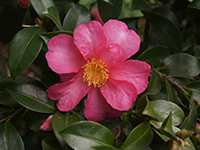
These beautiful shrubs are reason enough for having a shaded area in your garden.
For a spectacular display of colour in the shade, it’s hard to beat azaleas, camellias and rhododendrons. These plants don’t like full sun or extra heavy shade, but they are ideal in the shadow of large trees, on the sheltered south side of a wall or under a pergola.
Azaleas are actually just small varieties of rhododendrons. They can be either evergreen or deciduous and usually grow no more than 1-2 metres in diameter. Azaleas grow well throughout temperate Australia, but extremes of humidity are a problem in the dry inland or humid north.
Rhododendrons come from both tropical and temperate climates. The cool climate rhododendrons are the most commonly grown species (in cool to cool temperate regions). The tropical rhododendrons, also called ‘Vireyas’, are also becoming increasingly popular in many sub-tropical and tropical regions.
CULTURAL REQUIREMENTS
All these plants – azaleas, rhododendrons and camellias – have similar requirements generally, but there are a few specific needs. They do best in well drained, aerated and acidic soil (pH of 5 to 6) with high organic matter.
They need protection from strong direct sunlight and wind, and a cool, humid atmosphere is preferred.
The potting mix for vireyas should be between pH 5 and 6, but do not use sawdust or lawn clippings. They need protection from strong midday and afternoon sun and up to 30 to 50% shade is tolerated. Good humidity around the leaves is desirable – a hosing down will benefit the plant. Use a weak strength fertiliser in late winter/early spring. Additional sulphate of potash is necessary for strengthening the vigorous growth. Prune vireyas after flowering by cutting above the whorl of foliage. Ensure adequate ventilation around the plants, otherwise fungal problems may result.
SUN/SHADE TOLERANCE
The amount of sun a rhododendron, azalea or camellia requires depends upon where the plant came from, how it was grown and your local climate. As a general rule, the more sunny days you receive in a year, the more shade your plants will need. This is especially true for rhododendrons and azaleas however there are several varieties of full-sun azaleas available these days.
Camellia sasanqua is a sun tolerant species. Another point that should be considered, but which is often neglected, is the latitude. As the latitude increases (i.e. the further you move away from the equator) - the greater the angle at which the sun’s rays hit the earth, and the less strength there is in them. Therefore, southern gardens actually require more sunshine than gardens further north. North facing positions are generally too hot therefore the southern or eastern side of a wall or shade tree is usually best.
This is from our ebook-
Landscaping & Gardening in the Shade